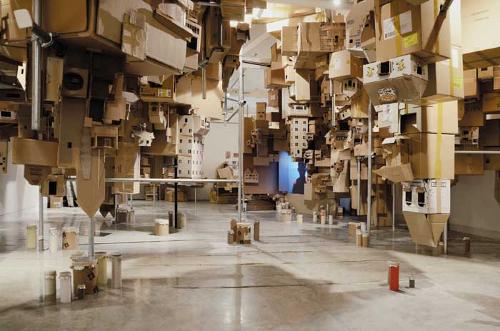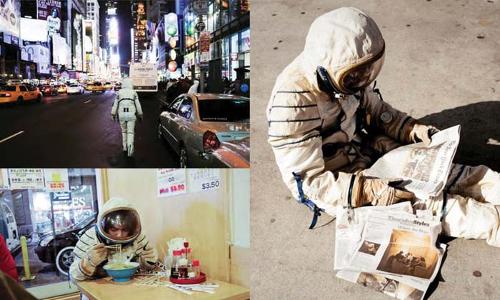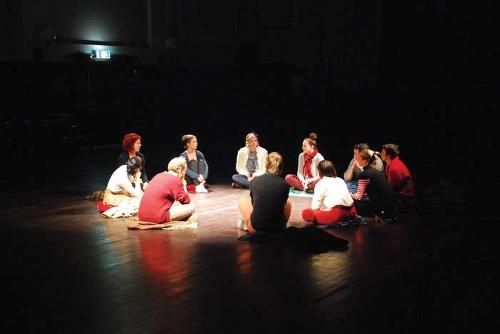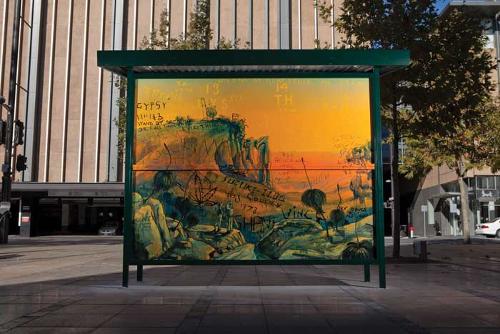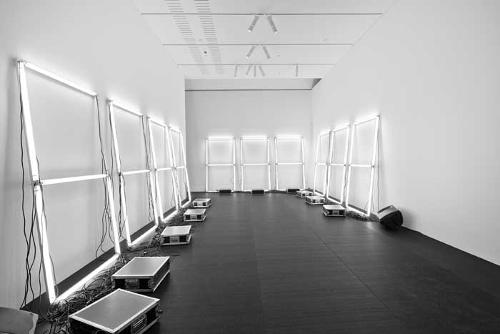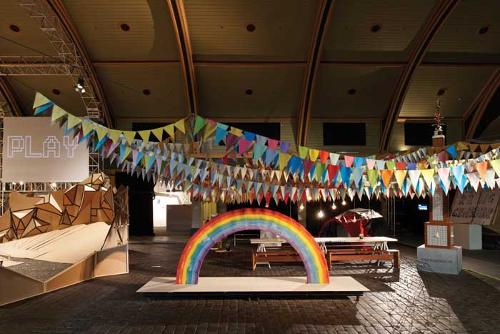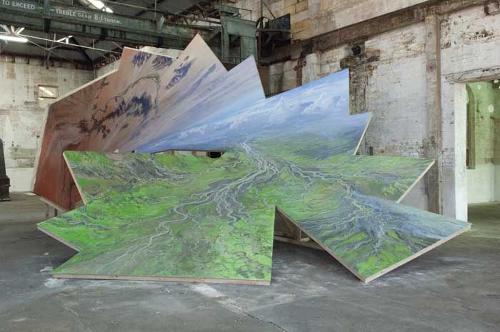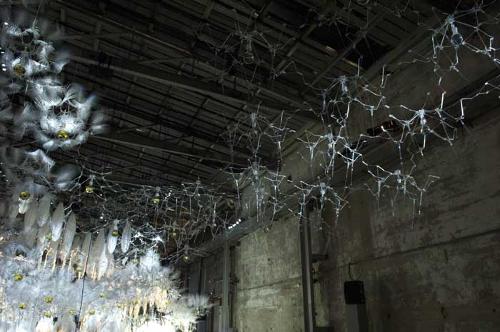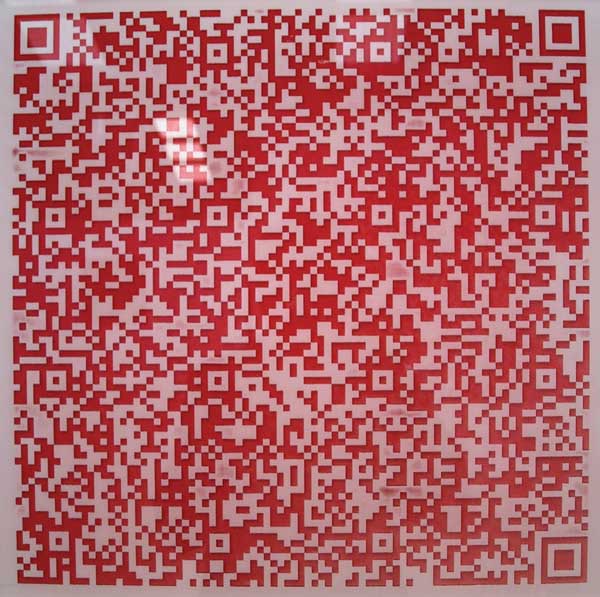
As an artist-run-initiative, Sawtooth in Launceston offers artists the opportunity to explore new ground. Melissa Smith's latest work manifests this challenge and represents a radical experimental shift in her practice. The result is Dissolve, a body of work that peripherally references Smith’s extensive background in exquisite printmaking that has been dominated by vibrant red, but in reality defines an alternative direction. Where her previous work is lyrical, flowing, hand-crafted and overtly connected to themes of nature through the depiction of reductive yet recognisable forms, this work crosses over to engage new digital forms and scientific data in a way that is more discursive, and which more directly aligns its red palette with a sense of danger.
The artist has experimented with digital 3D modelling and computer controlled router technologies to cut out the printing plates and to precisely carve out the imagery, which is dominated by the bold graphic of the QR code. Increasingly these small square abstracted forms are providing instant connectivity in our information-saturated world. On the surface Smith’s QR codes reference minimal abstraction. However, unlike the tendency in modernist minimalism to strip out the referent, here knowledge of the code gives the work a defined point of reference forging a tangible relationship between its hard-edged form and its antithetical propositional and discursive content. Scanning the works with a smart phone QR reader application opens a conversation that transcends or maybe even collapses art into knowledge, providing access to the exhibition’s literal context. The artist is playing with new technologies as artists have often done, but she is also using digital technology to build a more direct and informed connection to her intentions.
The specific subject embedded in the 2D and 3D prints has little if any direct aesthetic connection with the initiating coded patterns and everything to do with the three-dimensional laser print of the shelled creature that is placed behind glass in protected isolation in the centre of the gallery. The combination of these two elements bridges the space between aesthetic response and scientific inquiry, inviting the viewer via the artwork into an alternative way of seeing and understanding.
Smith has an ever-present concern for the environment. In this work, she focuses her attention on the pteropod or sea butterfly which she identifies as "an icon of fragility" and which is described on the footage that is downloaded when the QR code is read as “swimming potato chips”, implying that they are the food source on which many other creatures graze. These tiny molluscs are sensitive to the changes in the ocean’s acidity caused by fluctuations in the levels of carbon dioxide. Any alterations to these levels caused by climate change will have repercussions throughout the food chain. With a billion people dependent on the bounty of the sea, the survival of this tiny creature has a potential profound effect on our future.
Smith sought advice and support from a range of scientists and technologists in the development and creation of this work and has subsequently aligned with the Living Data Initiative, a collaboration of people from arts and non-arts backgrounds who are endeavouring to create a forum in which to consider art’s role in sharing scientific information and ideas. This is a comfortable fit, for the split between art and science is really a false dichotomy. Smith’s work builds on Romantic traditions about the natural environment that initiated a fascination in going beyond the functional world, a desire to spend time in contemplation of the wonders of nature, and ultimately a commitment to take care of our planet. Such sensibilities are encountered in both realms.

